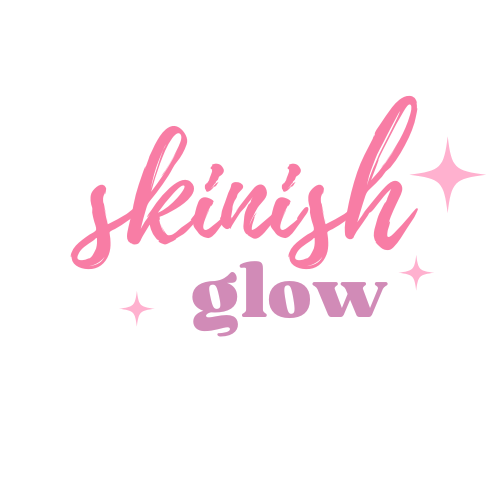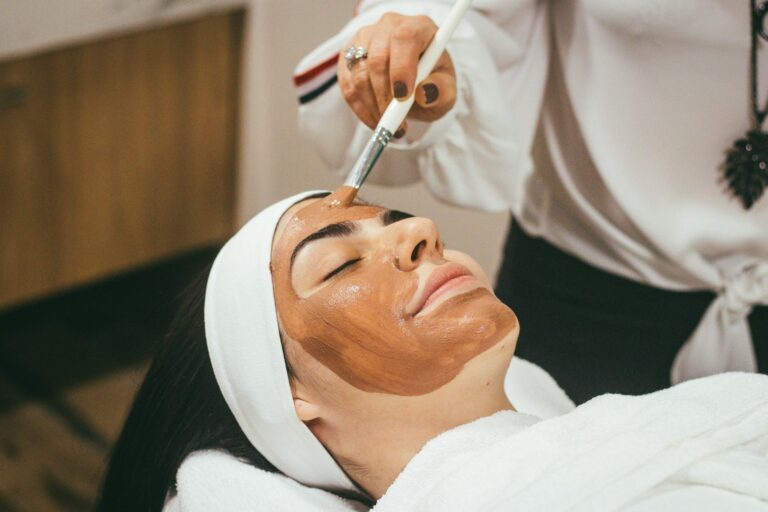Skincare labels can often feel overwhelming, but understanding them is vital for choosing the right products for your skin. By focusing on active ingredients, harmful additives, and beneficial compounds, you can easily navigate through the complex jargon. Pay attention to the first few ingredients listed, as they make up the majority of the formula. Additionally, being aware of common irritants and allergens can help you avoid reactions. This guide will equip you with the knowledge to confidently read and understand skincare labels, ensuring that your choices support your skin’s health.
Decoding the Skincare Ingredient Terminology
What Do All Those Names Mean?
Ingredient names often appear confusing, especially with the myriad of scientific terms used in skincare. Many products boast ingredients that may seem daunting or unpronounceable, such as butyrospermum parkii and sodium hyaluronate. This is where you might want to grab your phone or laptop and research these terms to demystify the labels. Typically, these names are derived from Latin or Greek and are designed to convey the chemical composition of the substance. For instance, glutathione is a powerful antioxidant, and understanding such scientific terminology helps you grasp the benefits of various ingredients for your skin.
Breaking Down Ingredient Classes: Actives vs. Inactives
In skincare labels, ingredients are generally divided into two main classes: actives and inactives. Active ingredients are the components that provide specific benefits to your skin, such as salicylic acid for acne or retinol for anti-aging. These ingredients are often highlighted in product descriptions because they directly contribute to the efficacy of the formula. On the other hand, inactive ingredients serve a supportive role, such as stabilizers, preservatives, and emulsifiers. While they may not have a direct impact on your skin’s health, their primary function is to enhance the product’s texture, longevity, and overall feel.
Understanding the difference between these two categories is valuable for selecting the right products for your skin goals. For example, if you’re looking to combat dryness, focusing on actives like hyaluronic acid or squalane while being aware of inactives that will boost texture and absorption can lead to better results. Analyzing the ratio of actives to inactives also helps gauge the potency of a skincare product, guiding you in finding the most effective formulations tailored to your specific needs.
The Order of Ingredients: More Than Just a List
Understanding Concentration and Order of Appearance
The order of ingredients listed on a skincare label is not arbitrary; it reflects the concentration of each component in the formulation. Typically, ingredients are listed in descending order, meaning that the first few items comprise the bulk of the product. If you look closely, the first five ingredients can account for more than 80% of the formula. For instance, if water is the first ingredient, followed by an emollient like glycerin, you can infer that the product is primarily hydrating. Similarly, if an active ingredient like hyaluronic acid is near the top, the product likely possesses strong moisturizing properties.
You might encounter occasions where the order appears slightly skewed, particularly when it comes to potent actives. For instance, a product that is highly concentrated in vitamin C may list it further down the line simply because it is still potent at lower concentrations. Hovering around the middle or lower end of the list doesn’t always equate to ineffectiveness; check the percentage on the label for an accurate gauge of how much of an active ingredient you’re getting.
How to Spot Key Ingredients at a Glance
To filter out the noise and pinpoint key ingredients quickly, focus your attention on those listed at the top of the ingredients list. Some labels might include highlight boxes or bold print that neatly showcases star ingredients, making your analysis simpler. Additionally, many brands emphasize signature elements that set their products apart, and these can often be found written in larger fonts or through descriptive marketing claims on the packaging.
While brands may tout certain “hero” ingredients as game changers, always scrutinize the supporting cast in the list. A stellar active ingredient like retinol can be ineffective if it’s paired with heavy silicones or other fillers that might diminish its potency. Checking the entire list allows you to assess whether the product aligns with your skincare goals. Look for ingredients that support the efficacy of the actives, such as antioxidants that can enhance the benefits of your anti-aging regimen.
Common Misconceptions in Skincare Labels
Myths About Natural vs. Synthetic Ingredients
Many people operate under the belief that natural ingredients are inherently better than their synthetic counterparts. The truth is that not all synthetic ingredients are harmful, and not all natural ingredients are beneficial. For example, *sodium lauryl sulfate* (SLS), a common synthetic surfactant, can be irritating for some individuals, while *aloe vera*, a natural ingredient, can actually exacerbate certain skin conditions for sensitive users. Evaluating the role and concentration of an ingredient in the product is far more important than simply categorizing them as natural or synthetic.
Your skin often reacts not to the origin of an ingredient but to its chemical structure and how it functions. Some effective skincare actives, like *retinol* and *hyaluronic acid*, are synthetically derived, yet they offer significant benefits for skin elasticity and hydration. On the flip side, natural components like *coconut oil* can clog pores for those with oily skin types. It’s crucial to look beyond the buzzwords and examine how an ingredient interacts with your skin type.
The Actual Role of Fragrances and Additives
Fragrances in skincare products frequently attract negative attention, often branded as mere irritants. However, understanding their purpose is key. They can enhance the sensory experience of your skincare routine, making application more pleasurable. Yet, it’s worth noting that some individuals may have sensitivities to certain fragrances or crucial oils, and it’s crucial to check ingredient lists for potential allergens. Sometimes, labels will denote the use of “fragrance” generically, which could mean a blend of both natural and synthetic aromas, complicating which may be irritating.
Additives such as *preservatives* also often receive a bad reputation, yet they’re fundamental in ensuring product safety and prolonging shelf life. Ingredient lists may include agents like *parabens* or *phenoxyethanol*, which prevent the growth of bacteria and mold, thus keeping your skincare routine safe. Look for products that balance efficacy and safety to prevent contamination, especially in products that contain water.
Fragrances and additives play pivotal roles in skincare formulations; they go beyond mere aesthetics or longevity. For instance, some anti-aging creams combine *peptides* with fragrances to not only deliver skincare benefits but also create an enjoyable experience. Striking a balance between a product’s sensory attributes and its performance is necessary, ensuring you reap the rewards without compromising your skin’s health. Always evaluate how these components fit into your personal skin needs and sensitivities for the most favorable outcomes.
Reading Between the Lines: Regulatory Guidelines
How Regulations Impact Ingredient Labeling
Your understanding of skincare labels is significantly influenced by regulations set forth by governing bodies. In the United States, the Food and Drug Administration (FDA) oversees the labeling of cosmetic products, ensuring that they adhere to specific standards. Although cosmetics are not subject to pre-market approval, the FDA requires that all ingredients be listed and that any claims made on the label are not misleading. Internationally, organizations like the European Commission have set stricter guidelines; for example, the EU bans certain ingredients that could potentially harm consumers. This difference in regulations underscores the importance of knowing where a product is made, as formulations and standards can vary widely from region to region.
Some regulatory bodies also mandate that certain claims can only be made if a product meets specific criteria. For instance, the term ‘fragrance-free’ must truly indicate that no synthetic or natural fragrances are included, while a product labeled as ‘organic’ must contain a minimum percentage of organic ingredients, which can also differ based on regional laws. Being aware of these regulations not only helps you choose safe products but also empowers you to challenge any misleading marketing claims you might encounter.
Deciphering Claims: “Non-Comedogenic,” “Hypoallergenic,” and More
The landscape of skincare claims like “non-comedogenic,” “hypoallergenic,” and “dermatologist-tested” can blur the lines between marketing buzzwords and factual descriptors. For example, “non-comedogenic” suggests that a product won’t clog your pores, but the definition lacks universal standardization, meaning that one company’s testing methods may differ from another’s. Understanding this can help you make informed choices based on your skin type rather than relying solely on these claims.
When a product is labeled “hypoallergenic,” it typically means that it has been formulated to minimize the risk of causing an allergic reaction. However, much like ‘non-comedogenic,’ there is no strict regulatory definition of ‘hypoallergenic,’ so it’s wise to approach this term cautiously. Individuals with sensitive skin should always perform a patch test before fully integrating a new product into their routine. Additionally, terms like “dermatologist-tested” don’t necessarily guarantee effectiveness; it may mean a dermatologist assessed the product rather than confirming its benefits.
The nuances of these claims necessitate a vigilant approach. Brands may use them as persuasive tactics, sometimes with little substantiation. Therefore, consulting consumer reviews or seeking products backed by scientific research can provide additional reassurance of their claims. Being discerning allows you to sift through the complexities and choose products that truly align with your skincare needs.
Personalizing Your Skincare Routine Through Label Analysis
Identifying Ingredients That Suit Your Skin Type
Every skin type has its unique needs, and understanding the ingredients that cater specifically to yours plays a key role in curating an effective skincare routine. For example, if you have oily skin, look for ingredients like salicylic acid and niacinamide that help minimize excess oil and prevent breakouts. On the other hand, those with dry skin can benefit from hydrating elements such as hyaluronic acid and glycerin, which draw moisture into your skin and keep it plump. Recognizing your skin type allows you to trim down the ingredient possibilities and focus on those that will actually make a difference.
Troubleshooting Common Skin Concerns with Ingredient Choices
Should you encounter problems like acne, hyperpigmentation, or sensitivity, ingredient analysis becomes a vital tool. For instance, if you notice persistent breakouts, incorporating formulations with benzoyl peroxide or alpha-hydroxy acids (AHAs) may offer relief. Meanwhile, individuals tackling uneven skin tone can find solace in products featuring vitamin C or retinoids for their brightening and skin-renewing properties. Likewise, those with sensitive skin should gravitate towards soothing agents like aloe vera or shea butter, avoiding fragrances and alcohol which can exacerbate irritation.
As you analyze ingredient labels, pay attention to your specific concerns and how certain components address them directly. Building a tailored approach not only increases efficacy but also enhances the overall health of your skin. Tracking the success—or failure—of products can guide you toward ideal formulations in the future. For example, if a product with salicylic acid leads to fewer breakouts, you can confidently incorporate it into your ongoing routine while avoiding ingredients that worsen your sensitivity. Personalizing your regimen through this analysis is a powerful step toward achieving your skincare goals.
Final Words
Considering all points, understanding how to read a skincare ingredient label is imperative for making informed choices about the products you use on your skin. Start by prioritizing the ingredients list, noting that the order indicates concentration, meaning the first five ingredients are typically the most dominant. Familiarize yourself with common terms and categories, such as humectants, emollients, and active ingredients, to help you navigate formulations with confidence. Being aware of potential allergens and irritants will further guide your purchase decisions, ensuring the products align with your skin’s specific needs.
As you become more adept at interpreting skincare labels, you will empower yourself to choose products that promote skin health and address your unique concerns. Your ability to discern beneficial ingredients from harmful ones can significantly impact your skincare routine and overall complexion. By applying these guidelines, you will cultivate a personalized skincare regimen that reflects your preferences and prioritizes your skin’s well-being.







